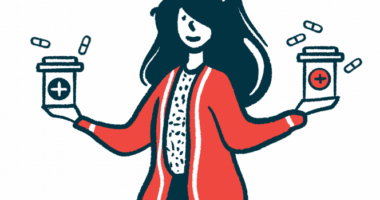FAP, hATTRs impact caregiver health-related quality of life: Survey
Caregivers had significantly worse HADS scores for anxiety than control population

Caring for a person with hereditary transthyretin amyloidosis (hATTR), a group of conditions that includes familial amyloid polyneuropathy (FAP), has a considerable impact on caregivers’ health-related quality of life (HRQoL) and productivity, a survey reported.
The findings were in the study, “A survey exploring caregiver burden and health-related quality of life in hereditary transthyretin amyloidosis,” published in the Orphanet Journal of Rare Diseases.
hATTR is a group of inherited disorders where protein aggregates build up to toxic levels in tissues. FAP is a form of hATTR mainly marked by nerve impairment, but such aggregates can also damage the heart, kidney, and eye tissues.
In the U.K., when reviewing the cost-effectiveness of new treatments, government agencies have recognized the need to consider the burden of the person who provides routine care to hATTR patients.
A previous survey demonstrated that hATTR profoundly impacts patients’ health-related quality of life, but also places a considerable burden on caregivers. In this survey, about 40% of caregivers had also been diagnosed with hATTR, however.
“To obtain robust caregiver utilities and broader caregiver burden data, the caregiver impact needs to be disentangled from that of being a patient,” wrote the researchers, who surveyed people who provided regular informal (unpaid) care for an hATTR patient, but didn’t have the disease themselves.
Their work was sponsored by Akcea Therapeutics, a subsidiary of Ionis Pharmaceuticals, the companies that market the approved FAP therapy Tegsedi (inotersen).
Burden to caregivers, effect on quality of life
The researchers surveyed 36 hATTR caregivers and 36 matched people from the general population who weren’t caregivers for someone with a disease.
Questions were related to caregiver burden, caregiver-reported patient characteristics, demographics, and chronic health conditions. HRQoL was assessed with the EQ-5D-3L and anxiety and depression by the Hospital anxiety and depression scale (HADS). The EQ-5D-3L is a questionnaire that measures health status on five domains — mobility, self-care, usual activity, pain/discomfort, anxiety/depression — and rates them as being of no problem, some problem or a severe problem.
Most respondent caregivers were female (81%) with a mean age of 56.3. Almost all were living with a partner/spouse (94%). More than three-quarters of caregivers (78%) were caring for a partner or spouse, while the remainder cared for a sibling (14%), a parent (3%), or a child (3%). Only one caregiver (3%) had been diagnosed with hATTR. About one-third (31%) of patients had nerve damage (polyneuropathy), while more than half (56%) had both polyneuropathy and heart muscle damage (cardiomyopathy), and 6% had cardiomyopathy.
Most patients were male (78%) with a mean age of 59.0, and 17% were employed. One-third (33%) could walk without assistance, more than half (58%) required walking support, 6% needed a wheelchair, and 3% were bedridden. All caregivers noted neuropathic symptoms in patients, with most reporting digestive tract problems (83%) and heart symptoms (72%).
Caregivers spent an average of 5.8 hours each day on practical care and 4.1 hours on emotional support. The number of practical care hours was significantly associated with patient walking abilities, with those with more severe physical impairments requiring more practical help. Conversely, patient walking capabilities did not impact the number of hours caregivers provided emotional support.
More than half (56%) of caregivers said their employment status changed due to hATTR care. A change in employment was significantly associated with patients’ walking abilities.
Caregivers had significantly higher (worse) HADS scores for anxiety and depression than the control population. A higher proportion of caregivers had scores that qualified as “probable clinical anxiety” (36% vs. 14%) and “probable clinical depression” (22% vs. 11%), but only anxiety scores were considered significantly worse than controls. The walking status of the patients wasn’t linked to these findings, however.
Caregivers reported lower health-related QoL than matched members of the general population, as measured by EQ-5D-3L. Similar results were found when the patient-caregiver, and corresponding control, were excluded from the analysis.
Lower (worse) scores in the EQ-5D-3L anxiety/depression domains were associated with lower caregiver utility, or the ability to provide care. Caregivers also had lower EQ-5D VAS scores, a respondent’s self-rated health status, than controls, but the difference wasn’t significant.
“The study results indicate that caring for a person with [hATTR] can have a considerable negative impact on caregivers’ HRQoL and productivity,” the researchers wrote. “The study findings provide important information for economic evaluations of [hATTR] treatments.”







